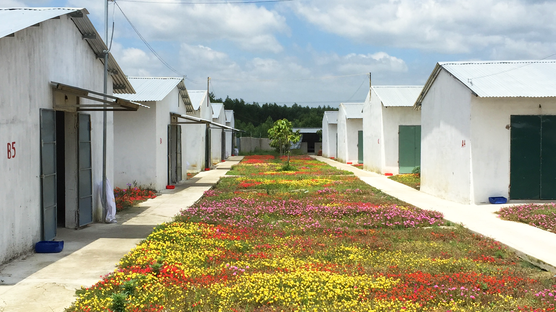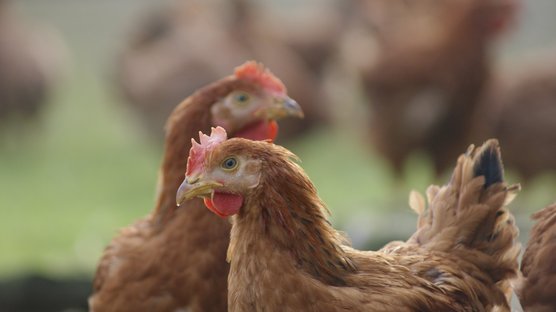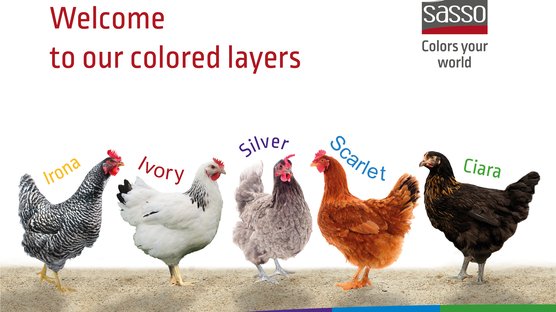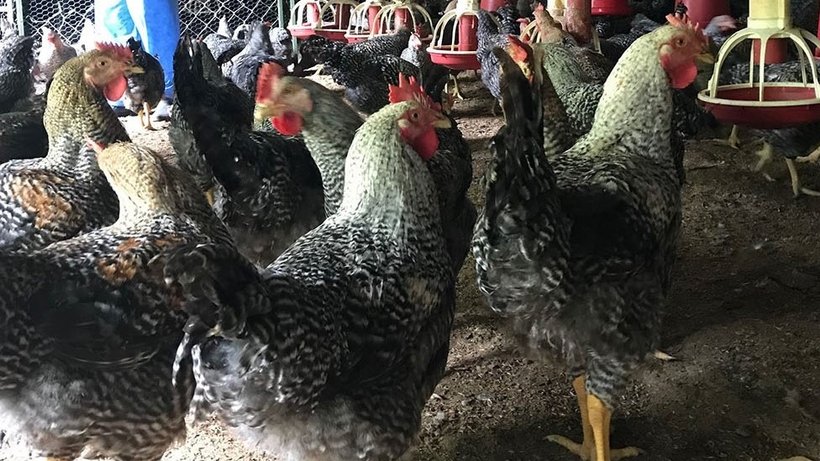
Published on Feb. 14, 2022
Nutritional management of future broiler breeder females
The rearing period of future breeding pullets is a key stage in the life of the animals that will allow them to express or not their genetic potential. With technical and economic performance’s aims in production, the quality of pullet management during the first 20 weeks of life must follow certain rules.
In this article, we would like to give some advice on the nutritional management of pullets during the rearing period. The nutritional recommendations are available on our website and from our technical sales staff, so do not hesitate to come back to them for more information.
The growth of future breeding pullets is divided into 3 very important phases. Each phase is accompanied by a very specific feed formula that meets the different challenges and objectives of the animals' development.
1/ The starting phase, from day 1 to 5 weeks of age:
The objective of this first phase is to secure the growth profile of the chicks to ensure the good body development of the future breeding females. We first try to promote the development of all the organs of the immune system (all organs except the reproductive ones), then to ensure the skeletal and muscular development of the chicks.
It is therefore essential to do everything possible from the moment they arrive to promote the feed intake of a feed that is rich in protein (organ development), lysine and other complementary amino acids (muscle development, feathering of the animals) and with a balanced Calcium/Phosphorus ratio (close to 2) to promote good bone growth. A solid skeletal development allows for muscle mass afterwards. A good premix is necessary to ensure the quality of all nutrients without any degradation during the preparation of the feed.
In this first phase, we recommend presenting the feed in the form of crumbles (with a granulometry adapted to the size of the animals, for example between 1 and 2.8mm for a starter) to concentrate the feed and avoid sorting by the chicks. A presentation in the form of mash during this first phase would risk to lead to feed imbalances and would not stimulate the chicks to consume (it is very rare to observe it on the field).
At the arrival of the chicks, we advise to offer enough feeding points (and water points) to ensure the interaction of the chicks between them, with the environment and with the feed, and to allow each one to consume the feed (1 plate for 50 chicks). As soon as the starter material is removed (at the end of the 8th day of age), we recommend to pay particular attention to the feeding space during the whole rearing period (a dwarf hen of 20 weeks of age requires for example ~ 11.5cm of feeding space).
Depending on the richness of the feed formula, we can recommend to let the chicks Ad Libitum during the first 2 weeks of life. This non-restriction must however be accompanied by a daily 1 to 2 hours empty feeders to allow all chicks to consume the fine particles. These fine particles contain mainly amino acids and vitamins essential to the good development of the future chicks, so they should not be thrown away if they are not consumed. An empty feeder also stimulates scratching and pecking behavior, and favors the ingestion of refusals (improves the Feed Conversion Ratio and therefore reduces production costs).
A high protein diet in the early stages of life can lead to some digestive disorders. This is why we recommend supplementing the drinking water from day 1 with organic acids (not mineral acids which can demineralize the skeleton) to buffer the pH around 3.5-4. This reduction of the pH of the water will help the digestion of the chicks and will avoid any form of enteritis during the first days/weeks of life. This acidification of the water is interesting during the first 5 weeks of life in continuous, then by period, at each feed transition or before and after each stress of the environment (temperature for example). This helps to avoid the appearance of E.coli when the animals are sensitive.
Finally, we advise to offer a night of 18 hours on the 5th day of life to allow the chicks to rest and digest. This method can considerably reduce the number of chicks blocked from a digestion point of view (chicks that will not grow anymore).
Finally, it is important to follow the growth of the pullets every week. Depending on the uniformity of the batch, we recommend proceeding to a grading in 2 or 3 batches at 3-4 weeks of age to manage the global batch in different weight groups. This method allows to have at 20 weeks of age a much more uniform batch than a batch managed in only one group and thus allows to better synchronize the start of laying.
This starting phase is very important and requires a management of comfort and accessibility to the chicks during the first 5 weeks of life. A 5 weeks old pullet must be at a breastbone score of about 4 (sufficiently round). Autopsies should show at this age a very thin layer of fat around the gizzard. The absence or the presence of too much fat reflects a poor body development of the pullet.
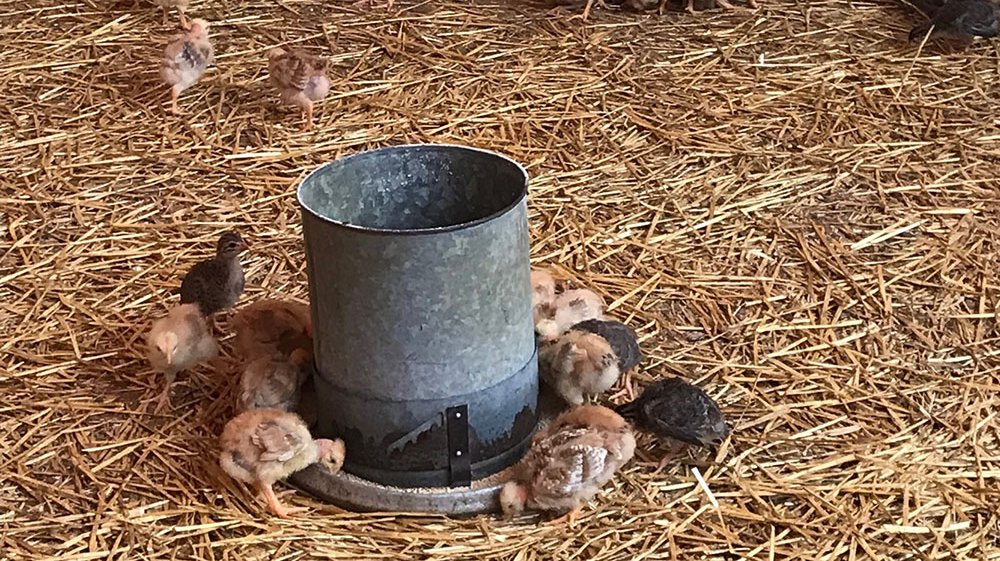
2/ The maintenance phase, from 6 to 15 weeks of age:
The objective of this second phase is to continue the skeletal and muscular development of the future breeders more slowly, while keeping a good batch uniformity. This phase can be divided into 2 stages: 6 to 10 weeks, then 11 to 15 weeks with even lower nutritional levels.
At these ages, we try to reduce the nutritional levels of the feed formula to keep the animal's development under control. We therefore reduce the levels of protein, lysine and complementary amino acids, while increasing the levels of fiber in the feed. This feed is richer in cellulose, which reduces the energy value of the feed and therefore increases the quantity to be consumed. The fact that the feed is filled with cellulose naturally increases the consumption time, which helps maintain a good batch uniformity. This is also beneficial for the pullets' behavior, as they are busy eating for a longer period of time. For a better batch uniformity and a less nervous behavior, note that we advise to distribute the feed in the dark.
This maintenance phase is also the phase where we start the fasting days. As this can be perceived as a stressful time by the pullets, we prefer to spread this transition from 1 meal a day every day to 1 meal a day 5 or 6 days a week over several 2-3 weeks. These fasting days allow the crop to develop its elasticity and its capacity to ingest large quantities of feed in a short time. A higher fiber feed is again an advantage during this maintenance phase.
Again, it is important to monitor the average body weight gain of the future breeders on a weekly basis. As mentioned above, a 5-week-old pullet should have a breastbone score of 4. We will try to bring a pullet with a breastbone score (between 10 and 15 weeks of age) between 2 and 3 in this maintenance phase. At autopsy, the pullet should not have a large layer of fat. A minimum, or ideally no fat layer, is important at this stage. Too much fat would lead to start the sexual development of the pullets too early.
3/ The pre-laying phase, from 16 weeks of age to the first eggs:
The objective of this last phase of rearing is to develop the pullets' reproductive system, to start storing calcium in the medullary bone and finally to allow the future reproductive pullets to develop a small fat reserve.
This phase is therefore accompanied by an increase in protein and amino acid levels to develop the oviduct and ovarian cluster. We try to increase the energy value of the feed at this stage to allow the hens to keep a small fat reserve just before laying. It will be important not to let the hen draw on her reserves to produce an egg, hence the importance of having a minimum reserve.
Therefore, the ADG of pullets for laying should be higher during this period than during the maintenance phase. On inspection of the pelvic bones before laying, they should be covered with a light layer of fat and the abdominal fat should be slightly felt.
At this stage, in order to stimulate the development of the ovarian cluster, we also advise to gradually increase the duration of access to water per day. Two weeks before transferring the hens, we recommend adding 15 min of water/day with the objective of arriving at the day of transfer at duration in water = duration in light. The flock may strongly degrade the litter, which has little impact on the end of the rearing period. However, if the batch remains in the same building during production, we recommend a different water management to avoid this litter degradation.
Finally, this nutritional phase is accompanied by an increase in the calcium level to prepare for egg laying. The aim is to strengthen the medullary bone in Calcium to allow the laying hens to have enough calcium reserves in case of need once the laying process has started. Note that the organic acid helps in the storage of calcium.
This phase is crucial in preparation for laying. As long as the first eggs are not collected, it is important to keep the day(s) of fasting (at the risk of stimulating egg laying), and to continue to follow the growth curve. This period is conducive to the important fattening of the hens, with an irreversible impact on the life of the animal (hemorrhagic livers, high mortality, lower performance). It is therefore important to keep in mind that at this stage, the hens only have maintenance needs, and no production needs yet.
We recommend at this age, before the first eggs are laid, to supplement with a hepato-protector to allow the liver and kidneys to prepare themselves for the future feed stimulation. The feed intake will be significantly increased in a very short period of time, which will be perceived as liver stress. The hepato-protector does not have a curative role, but a preventive one. It will not reduce the fattening rate of your future layers.
What to bring back home :
The rearing period is just as important as the production period. The right nutritional management allows to cover the needs of the future breeding pullets on the 3 different phases of growth: a phase of development of the organs of the immune system, of the skeleton and of the muscular mass, a second phase of maintenance and finally a phase of preparation to the lay. 3 phases with different stakes and targets which require to observe the animals, their behaviors, and their fattening state.
We would like to remind you that our lines are selected on different traits that may or may not be complementary: we will mention here, for example, the laying and the breast meat yields. The improvement of performance on specific traits leads to changes in skeletal and muscular morphology. This implies needs that change from one generation to the next.
Let's take for example a SA51A female. In 3 generations time (18 months), we have increased the hatching eggs by 1 egg between 26 and 57 weeks of age. We can therefore easily imagine that over several years, the production needs change, so do the maintenance needs. It is therefore important to keep in mind that each batch is different. Our standards remain indicators that you can adapt to your environment with the help of your technical sales representative.
In the next article, we will talk about nutritional advice during the laying period to ensure good technical and especially economic performance of the batch.

